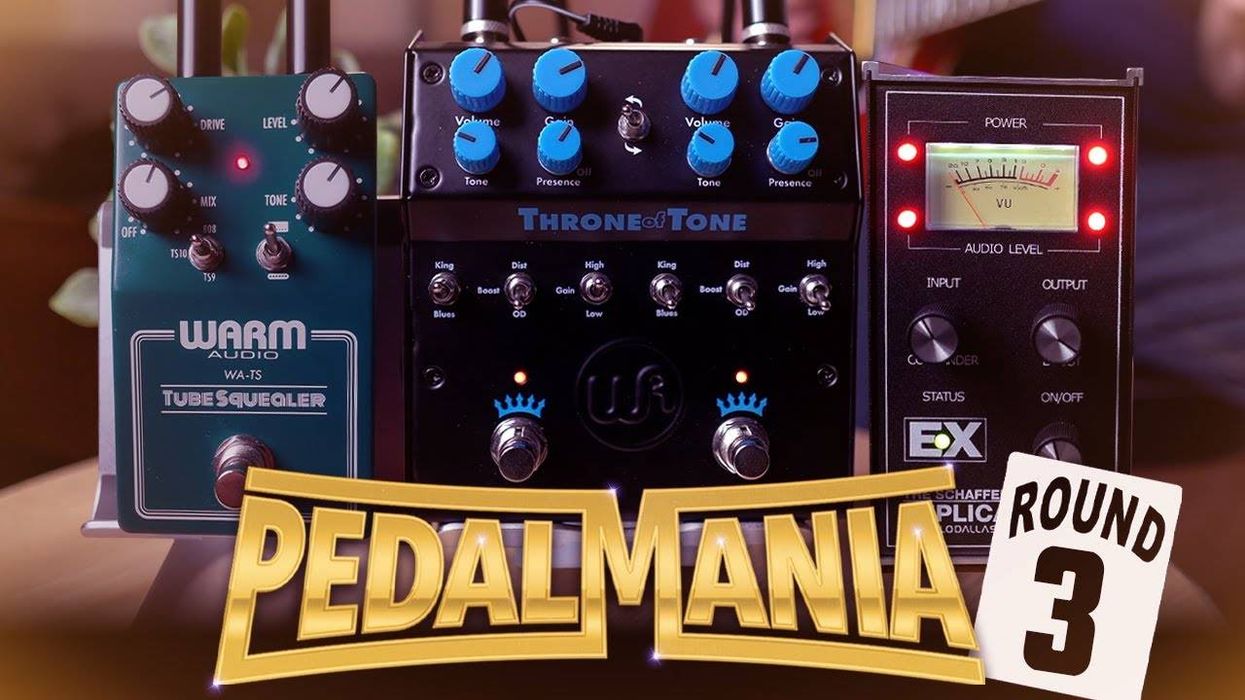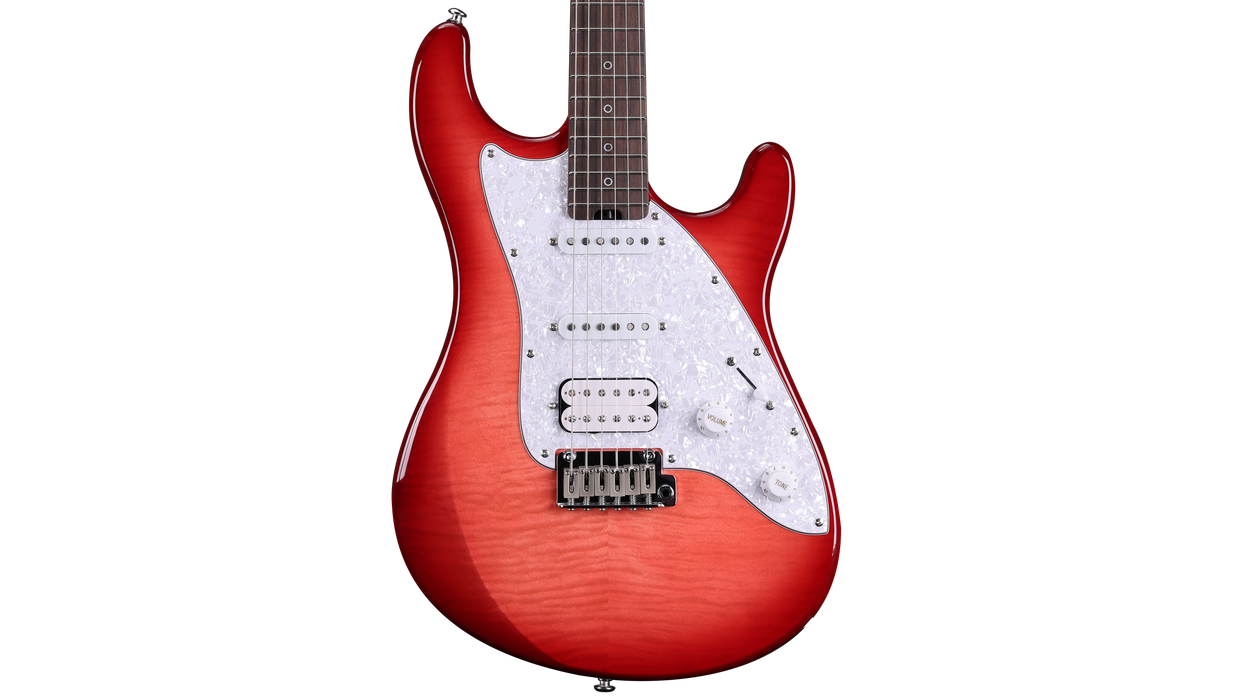Bill Crook
Bill Crook, West Virginia luthier and former audio tech to Frank Zappa, America, and many others, builds most of Brad’s stage guitars, and had this to say: “Brad is one of those guys who has a pre-determined sound in his head when it comes to guitars. He’s looking for a guitar that gives him that classic Don Rich/John Jorgenson Tele twang. If you go back and listen to the old Buck Owens and Desert Rose Band records, you’ll understand what I mean. It’s that Bakersfield sound.
“Brad wants clarity and snap on the low end. Even when he was growing up, he gravitated toward that sound. He needs a guitar that’s very even from a tonal standpoint. I use different pickups in Brad’s guitars, including APC’s in the neck, plus bridge pickups by Kinman, Lindy Fralin, Di Marzio, and the new Peter Florance Voodoo pickups.”
crookcustomguitars.com
Dr. Z
Mike “Dr. Z” Zaite, the founder and president of Dr. Z Amplification in Ohio, commented, “Brad bought his first Dr. Z amp in 1999, a Mazerati 2x10 combo from a cool little music store in LaVergne, TN, Mike E’s Guitars, a shop that specialized in esoteric guitars and amps. I’ve watched Brad go from playing county fairs to sold-out arenas. Just goes to show what talent can do for you.”
I asked Mike what Brad looked for in his amps, and he told me, “As you know, Brad is a Tele player, and the Tele is one of the toughest guitars to mate up with an amp. Foremost, it must have a good twang, a warm tone, and be Tele-friendly. The brilliance and articulation of a Vox-based design has always coupled well to Brad’s style. Like most great artists, Brad looks for new and unique tones on each song he records, so in the studio, he’s always experimenting and blending various model amps together, and does the same thing in his live setup.
“Brad has helped me design three amp models. The first was the RX Extra Strength, the second was the Stang Ray, a clean monster with plenty of clang—think the opening chords to ‘A Hard Day’s Night.’ The third was a collaboration between the late Ken Fischer and myself. I built an amp loosely based on the Trainwreck Rocket, sent it to Kenny, who loved Brad’s playing, and he sprinkled some of his magic dust and tweaked the amp to perfection. This amp was affectionately named the Z-Wreck, and was given to Brad, who cherishes it. Brad is a great guy and one of the most loyal friends and supporters. Any manufacturer would die to have him as an endorser. I feel blessed that our paths have crossed.”
drzamps.com
Robert Keeley
Robert Keeley has also had a lasting and fruitful relationship with Brad. As he told me, “I guess Brad and I first got to know each other around 2003. It’s a funny story. I mentioned to my wife that I wanted a Paisley Tele and she bought me one for Christmas, but the guy she bought it from didn’t pack it very well and it was damaged in shipment, so she bought me another one. Now, I have two Paisley Telecasters, right? So, some time went on, and I got a Paypal payment from someone named B. Paisley. He bought a few pedals. I mentioned it to my wife and she figured it must be Brad Paisley. She’s a big country music fan. I took a chance and contacted B. Paisley, and sure enough it was Brad.”
As close a relationship as Brad and Robert have, the two have never worked together to develop a special pedal. “I would love to work with Brad,” he said, “to build a Brad Paisley pedal at some point. Brad uses the Katana and Compressor simply because he likes the sounds. Occasionally, he’ll request something from me for a special effect on a particular song.”
robertkeeley.com
Bill Crook, West Virginia luthier and former audio tech to Frank Zappa, America, and many others, builds most of Brad’s stage guitars, and had this to say: “Brad is one of those guys who has a pre-determined sound in his head when it comes to guitars. He’s looking for a guitar that gives him that classic Don Rich/John Jorgenson Tele twang. If you go back and listen to the old Buck Owens and Desert Rose Band records, you’ll understand what I mean. It’s that Bakersfield sound.
“Brad wants clarity and snap on the low end. Even when he was growing up, he gravitated toward that sound. He needs a guitar that’s very even from a tonal standpoint. I use different pickups in Brad’s guitars, including APC’s in the neck, plus bridge pickups by Kinman, Lindy Fralin, Di Marzio, and the new Peter Florance Voodoo pickups.”
crookcustomguitars.com
Dr. Z
Mike “Dr. Z” Zaite, the founder and president of Dr. Z Amplification in Ohio, commented, “Brad bought his first Dr. Z amp in 1999, a Mazerati 2x10 combo from a cool little music store in LaVergne, TN, Mike E’s Guitars, a shop that specialized in esoteric guitars and amps. I’ve watched Brad go from playing county fairs to sold-out arenas. Just goes to show what talent can do for you.”
I asked Mike what Brad looked for in his amps, and he told me, “As you know, Brad is a Tele player, and the Tele is one of the toughest guitars to mate up with an amp. Foremost, it must have a good twang, a warm tone, and be Tele-friendly. The brilliance and articulation of a Vox-based design has always coupled well to Brad’s style. Like most great artists, Brad looks for new and unique tones on each song he records, so in the studio, he’s always experimenting and blending various model amps together, and does the same thing in his live setup.
“Brad has helped me design three amp models. The first was the RX Extra Strength, the second was the Stang Ray, a clean monster with plenty of clang—think the opening chords to ‘A Hard Day’s Night.’ The third was a collaboration between the late Ken Fischer and myself. I built an amp loosely based on the Trainwreck Rocket, sent it to Kenny, who loved Brad’s playing, and he sprinkled some of his magic dust and tweaked the amp to perfection. This amp was affectionately named the Z-Wreck, and was given to Brad, who cherishes it. Brad is a great guy and one of the most loyal friends and supporters. Any manufacturer would die to have him as an endorser. I feel blessed that our paths have crossed.”
drzamps.com
Robert Keeley
Robert Keeley has also had a lasting and fruitful relationship with Brad. As he told me, “I guess Brad and I first got to know each other around 2003. It’s a funny story. I mentioned to my wife that I wanted a Paisley Tele and she bought me one for Christmas, but the guy she bought it from didn’t pack it very well and it was damaged in shipment, so she bought me another one. Now, I have two Paisley Telecasters, right? So, some time went on, and I got a Paypal payment from someone named B. Paisley. He bought a few pedals. I mentioned it to my wife and she figured it must be Brad Paisley. She’s a big country music fan. I took a chance and contacted B. Paisley, and sure enough it was Brad.”
As close a relationship as Brad and Robert have, the two have never worked together to develop a special pedal. “I would love to work with Brad,” he said, “to build a Brad Paisley pedal at some point. Brad uses the Katana and Compressor simply because he likes the sounds. Occasionally, he’ll request something from me for a special effect on a particular song.”
robertkeeley.com














![Rig Rundown: AFI [2025]](https://www.premierguitar.com/media-library/youtube.jpg?id=62064741&width=1245&height=700&quality=70&coordinates=0%2C0%2C0%2C0)












 Shop Scott's Rig
Shop Scott's Rig